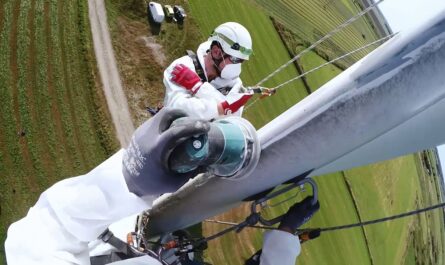Die casting is a versatile manufacturing process that can be used to produce complex metal components with a high degree of accuracy and repeatability. This process allows for high production rates and results in components with superior mechanical properties and surface finishes. In this article, we will explore the die casting process in more depth along with its various applications.
What is Die Casting?
die casting involves forcing molten metal under high pressure into a mold cavity. The mold, also known as a die, has the exact shape and dimensions of the final part. Common metals used in die casting include aluminium, zinc, magnesium, and tin-based alloys.
Once the molten metal is injected into the die cavity at high speed, it solidifies into the final net shape of the component. The die is then opened and the cast part is ejected. Compared to other metal casting methods, die casting offers a number of advantages such as better dimensional accuracy, tighter tolerances, and smoother surface finishes on the final parts.
Die Casting Equipment
There are two main types of die casting machines used in industry – hot chamber and cold chamber machines. Hot chamber die casting machines keep molten metal in a holding furnace at the bottom of the shot sleeve. Cold chamber die casting machines are more popular as they allow for more precise temperature and pressure control during the shot.
The major components of a cold chamber die casting machine include a shot sleeve, injection chamber, injection plunger, holding furnace, and die sets. High-speed computers and precision equipment allow for tightly controlled injection speeds and filling parameters. Top manufacturers can produce hundreds of defect-free parts per hour using automated die casting lines.
Applications of Die Casting
Given the advantages it provides, die casting is widely used across many industries for manufacturing parts that require complexity, precision, and repeatability. Here are some of its major applications:
Automotive Parts – Die casting is heavily used in the automotive industry for components like engine parts, transmissions, steering gears, brake systems, and housings. Car manufacturers favor die casting for its ability to product lightweight yet strong parts.
Hardware – Items like locks, handles, fixtures, tools, and other common hardware used extensively are produced using die casting. The process results in durable parts with intricate details.
Electronics – From laptop and keyboard housings to small electronics parts, die casting plays a key role. It allows the fabrication of frames, panels and connecting hardware for electronics.
Appliances – Components inside refrigerators, washing machines, air conditioners, and other appliances are often die cast for their structural and cosmetic requirements.
Toys/Sporting Goods – Manufacture of toy cars, figurines, bike parts, sporting equipment relies on die casting for design flexibility and mass production capabilities.
Benefits of Die Casting
There are multiple advantages that die casting offers over alternative metal fabrication techniques:
Dimensional Accuracy – Parts can be produced within ±0.001″ tolerances straight from the die without any secondary machining.
Complex Shapes – Dies can be designed to produce components with intricate interior and exterior features, moving parts, enclosed cavities and thin walls.
Mass Production – High injection speeds allow die casting machines to produce hundreds of parts per hour in an automated process.
Surface Finish – Metal alloys solidify so quickly the final part has a smooth glass-like finish, eliminating the need for secondary polishing.
Material Properties – Die cast metals exhibit good mechanical properties like strength and durability along with corrosion resistance.
Design Flexibility – Changes to the part design only require modifying the die inserts, allowing rapid design iterations.
Net-shape Manufacturing – The cast part is the final product without any additional subtractive manufacturing steps required.
Cost Effectiveness – When produced in high volumes, die cast parts have competitive unit costs compared to alternative fabrication techniques.
Future Developments in Die Casting
Going forward, die casters are working on new metal alloys with improved properties, larger casting capacities, and more sophisticated control systems. Advanced simulation and virtual tool tryout software helps optimize die designs. Additive manufacturing is being used to 3D print prototype tool inserts. Robotics is automating material handling to improve efficiency. New die lubricants and coating technologies promise even finer surface finishes and reduced porosity. Overall, die casting continues to evolve as a preferred solution for precision, high-volume metal part fabrication across industries.
*Note:
1. Source: Coherent Market Insights, Public sources, Desk research
2. We have leveraged AI tools to mine information and compile it


